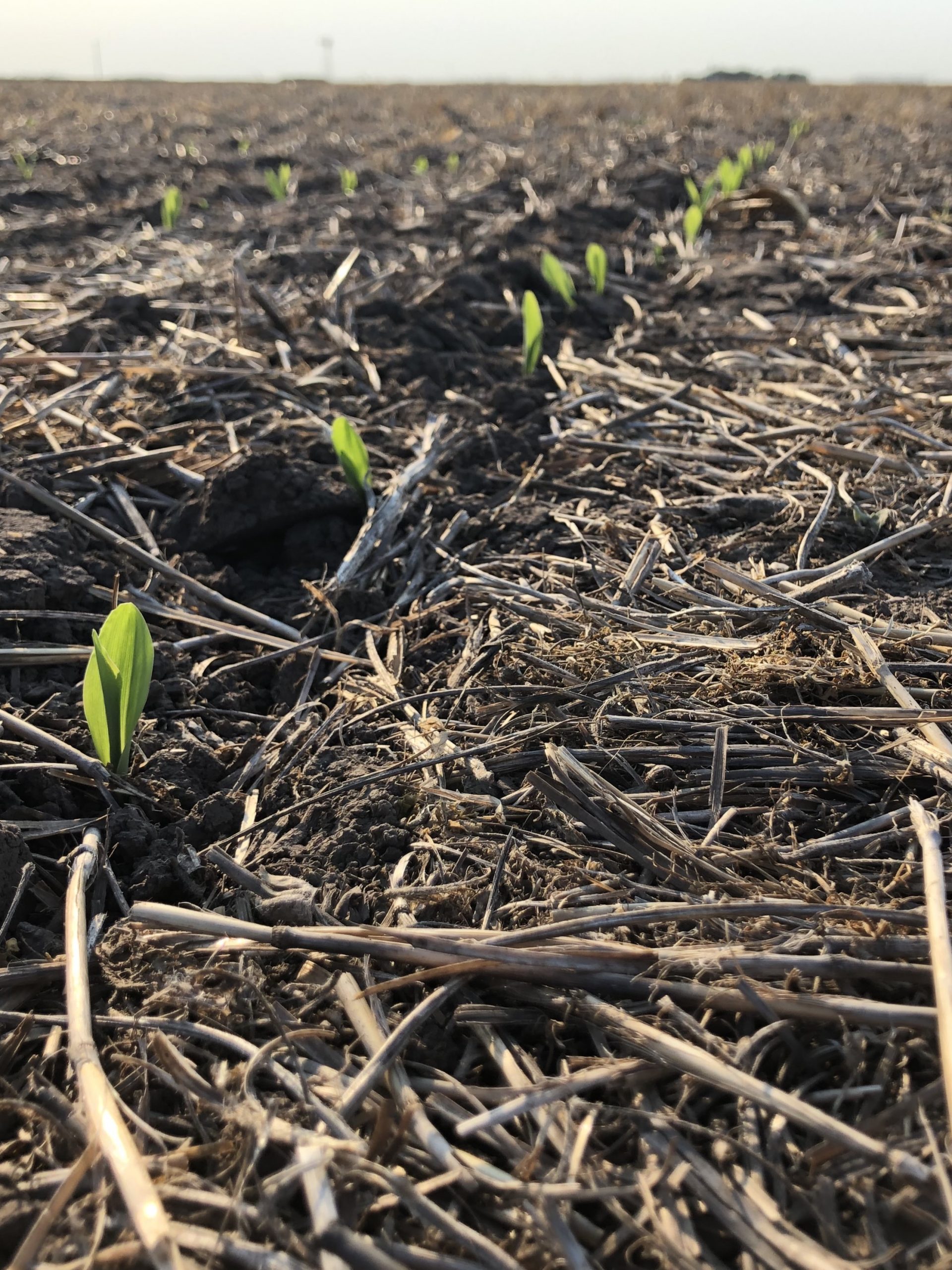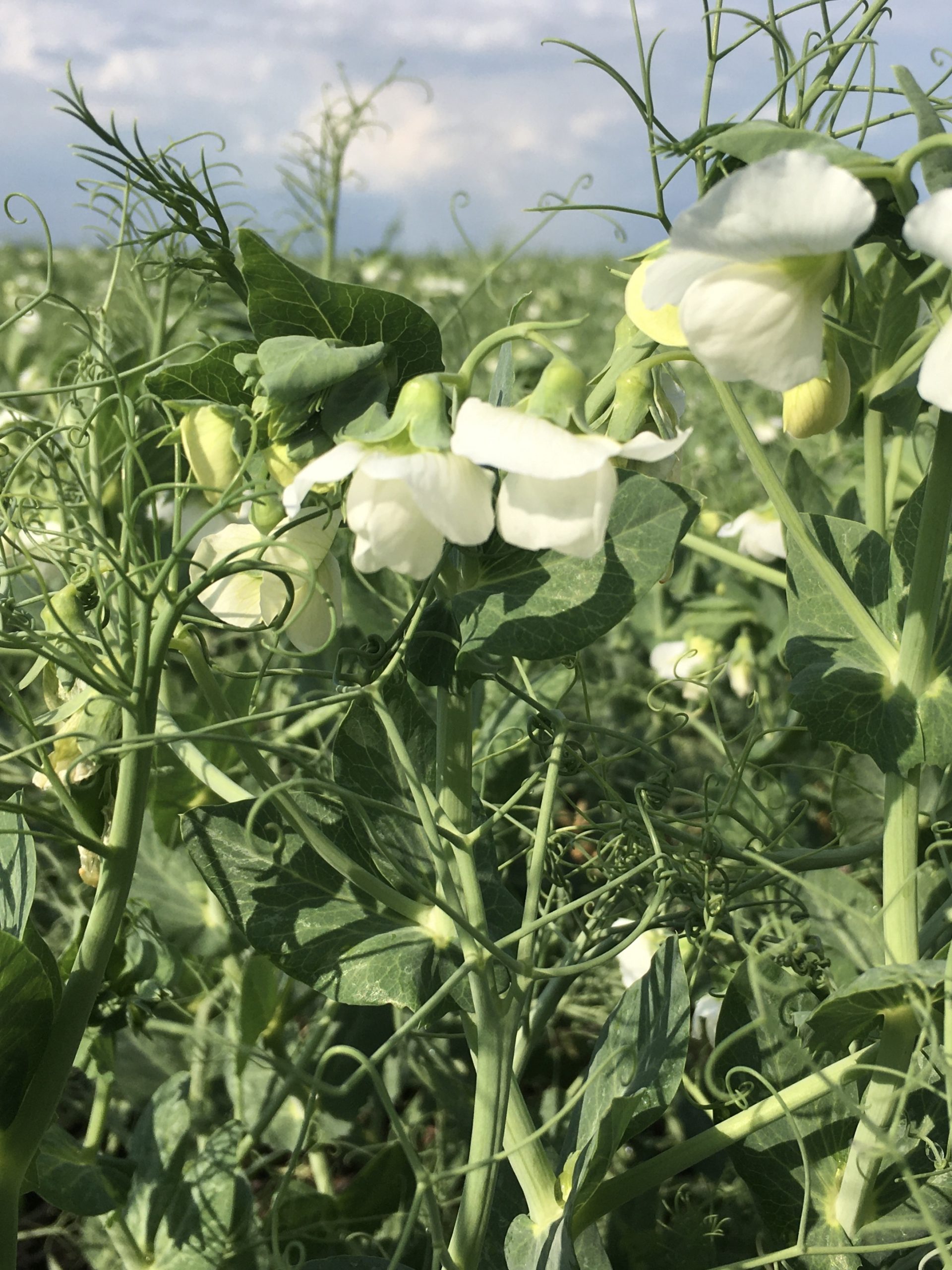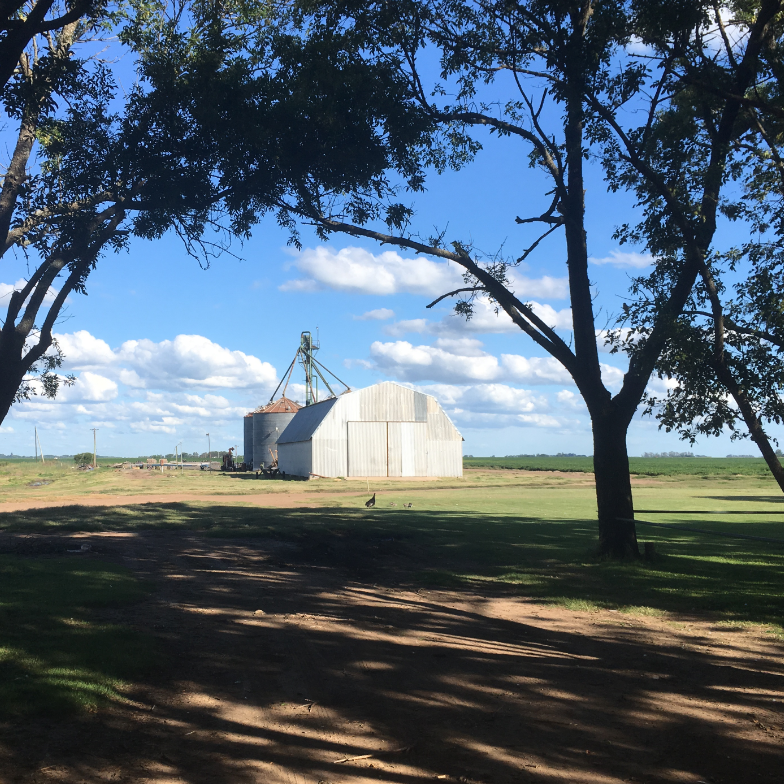Growing Beyond Profitability
What Made Us Reconsider Our Way of Production?
In 1996 genetically modified soybeans have been introduced in Argentina. In hindsight, this permission spread all over the place. Formerly well-known for its grass-fed beef production, the agricultural land of the Pampa Húmeda was converted into large-scale soybean and corn production operations. Monocultures have been fostered. The fertile soil and over-simplification of farming practices based on intensive chemical application ensured lucrative yields. The pastures have been turned into conventional soybean cropland and the soybeans are being fed to cattle held in lots all over the world. As a result of such production systems, the agricultural sector is now one of the largest emitters of greenhouse gases ≡.
What happened? The humic horizon has lost its organic matter and microbial activity level through monocropping and synthetic treatments and therefore, started to compact and erode. This counts as the first stage of desertification, which eventually would lead towards infertile soils. The dominant, conventional farming system relies on synthetic proprietary inputs and ties farmers to agribusiness dependencies whilst often losing ecological knowledge. On top of that, the synthetic chemicals heavily affected the health of people in the area.
After 30 Years of Exploitation, the System Is Long Overdue for a Change!
Being fully engaged in the system of highly profitable seed production, and also in a lean and comfortable tenancy agreement, we started to question the mid- and long-term outcome of our cultivation methods. Our process of rethinking, triggered through our experiences on-site, has simultaneously been supported by the international press ≡ ≡. Investigations indicated possible negative effects of soybean production in Argentina. Some of these being, the population suffering from high child mortality and emerging diseases. Therefore, the first argument that spoke for us to reconsider our conventional farming practices was human health. Not only are there dangerous effects for humans on-site, but wildlife is threatened as well. Additionally, the persistence of active ingredients applied on crops could possibly contaminate the entire supply chain, eventually landing on each household’s plate. Therefore, spraying can affect people in two ways: direct exposure during field work and possibly indirect exposure through diet.
Not Just Sustainable, Regenerative!
The necessity of leaving conventional farming methods behind manifested slowly. Our approach was and is to work through a sustainable, profitable, environmentally-friendly and continuous change.
It took us some research until we heard about the model of Regenerative Agriculture and realized that this was our way to go. This way of agricultural production works through an intrinsic cycle of quality restoration for: soil, water, air, ecosystems, animals and ultimately also humanity.


What Made Us Reconsider Our Way of Production?
In 1996 genetically modified soybeans have been introduced in Argentina. In hindsight, this permission spread all over the place. Formerly well-known for its grass-fed beef production, the agricultural land of the Pampa Húmeda was converted into large-scale soybean and corn production operations. Monocultures have been fostered. The fertile soil and over-simplification of farming practices based on intensive chemical application ensured lucrative yields. The pastures have been turned into conventional soybean cropland and the soybeans are being fed to cattle held in lots all over the world. As a result of such production systems, the agricultural sector is now one of the largest emitters of greenhouse gases ≡.
What happened? The humic horizon has lost its organic matter and microbial activity level through monocropping and synthetic treatments and therefore, started to compact and erode. This counts as the first stage of desertification, which eventually would lead towards infertile soils. The dominant, conventional farming system relies on synthetic proprietary inputs and ties farmers to agribusiness dependencies whilst often losing ecological knowledge. On top of that, the synthetic chemicals heavily affected the health of people in the area.
After 30 Years of Exploitation, the System Is Long Overdue For a Change!
Being fully engaged in the system of highly profitable seed production, and also in a lean and comfortable tenancy agreement, we started to question the mid- and long-term outcome of our cultivation methods. Our process of rethinking, triggered through our experiences on-site, has simultaneously been supported by the international press ≡ ≡. Investigations indicated negative effects of soybean production in Argentina. The population suffered from high child mortality and emerging diseases. Therefore, the first argument to reconsider our conventional farming practices was: human health. Besides the effects on humans on-site, wildlife was threatened as well. Additionally, the persistence of active ingredients applied on crops end up contaminating the whole supply chain, eventually landing on each household’s plate. The spraying affected people in two ways: direct exposure during field work and indirect exposure through their diets.
Not Just Sustainable, Regenerative!
The necessity of leaving conventional farming methods behind manifested slowly. Our approach was and is to work through a sustainable, profitable, environmentally-friendly and continuous change.
It took us some research until we heard about the model of Regenerative Agriculture and realized that this was our way to go. This way of agricultural production works through an intrinsic cycle of quality restoration for: soil, water, air, ecosystems, animals and ultimately also humanity.
Regenerative Interaction
What Do We Stand For?
We understood that a holistic perspective on the food system nurtured our drive. Yields are not the only measurement for a profitable farm. Food security and quality are measurements as well and can be supported through Regenerative Agriculture, simultaneously to improving the climate, regenerating ecosystems, restoring biodiversity and revitalizing rural communities.
Cooperation with nature is the basic principle for this inevitable shift in agriculture and should be supported by policymakers, farmers and consumers.
The official change began in July 2019. We engaged Soil Capital Farming S.R.L., an external farm consulting team for Regenerative Agriculture, and started to go our own way. Through their help, we found our current main operating partner Agritest S.R.L., who has been practicing “no-tillage conservation agriculture” since 1987. Our new partner is cultivating around 80 % of our farmland through executing the requirements of our guidelines. The other 20 % are still let to the seed producer SANPA Semillas S.A. Since April 2022, our team has grown and we have become more independent and are running the farm redesign and the business strategy through an own team of experts and supervisors – without external consultancy.
The economic factor is one of the three pillars in our Decision Making process. To ensure the ongoing transition, we decided to work on this divided share of responsibilities with partner and tenant obligations to guarantee the investment payments for the transition.
Development, Farm & Business Strategy
La Delia Verde S.A.U.
Operative Partner
Agritest S.R.L.
Development, Farm & Business Strategy
La Delia Verde S.A.U.
Operative Partner
Agritest S.R.L.
Tenant
The Lab Without a Roof
Regenerative Agriculture follows knowledge-intensive principles which originate in ecological thinking. Regenerative practices are guided by their principles and outcomes.
In theory, we know what we are doing.
Practically, we are cultivating one of the most productive arable farmlands in the world, with the intention to increase fertility and to stabilize its fertility for future generations. We are working with an internationally experienced team and have the willpower to make the change from Conventional to Regenerative Farming happen. Following Holistic Management practices, our purpose is to establish living soils for healthy food for healthy people. On our journey to accomplish these long-term changes, we know that we are going to experience obstacles, irregularities and incidentals, which are unpredictable. To us, this unconventional approach is an indicator that we are on the right path. Changing a Conventional Farm into a Regenerative one means to be prepared to “jump” in a certain moment. Meaning that you need to “trust” nature at one point to cope with less synthetic inputs and to believe that the plants will form a stable partnership with the soil and the environment. Trial and error are part of the development.
Technical and Operational Development:
Cover crops and no-till practices
Diversification of crop species and varieties
Tree nursery (1,000+ seeds and cuttings) for agroforestry
Introduction of perennial grass and pasture in lowland areas
Integration of livestock in December 2021 for Holistic Planned Grazing
Keyline design for landscape development and improved water flows
Team Training
Educational program
